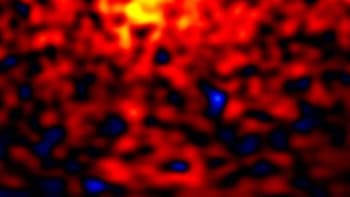It will be difficult for the Large Hadron Collider at CERN, which comes online next year, to detect "WIMPS" -- the leading dark-matter candidate particles -- say physicists in the US. However, the collider, which will be the world's most powerful particle accelerator, might be able to detect a new class of particles called "SuperWIMPS" -- the decay products of WIMPS. The detection of dark matter particles would represent a major breakthrough in both particle physics and cosmology (Phys. Rev. Lett. 96 151802).
Dark matter was originally proposed by astronomers to explain why galaxies rotate much faster than can be explained by the amount of visible matter they contain. This mysterious form of matter does not emit or absorb electromagnetic radiation — hence the name “dark” — and can only be detected by its gravitational influence on ordinary matter. Although dark matter is thought to make up 25% of the matter in the universe, no one knows what it is.
Black holes and other objects are known to make up some of the dark matter in our galaxy. However, many cosmologists believe that galaxies also contain exotic particles left over from the big bang. These include WIMPS (Weakly Interacting Massive particles) and other particles not included in the Standard Model of particle physics.
As their name suggests, WIMPS interact with other particles via the weak force (one of the four fundamental forces in Nature). Yet, despite numerous searches by particle physicists around the world, no WIMPS have ever been detected. Many theorists assume that WIMPS are the lightest of all particles and are therefore the most stable. However, in 2003, Jonathan Feng of the University of California at Irvine and colleagues found that WIMPS are often not stable at all because they can decay into lighter particles, which they called SuperWIMPS.
Like WIMPS, SuperWIMPS emit no light and have mass and exert a gravitational force. However, they do not have the type of weak-force interactions that WIMPS have and can only interact via gravity. Since the gravitational force is not as strong as the weak force, these interactions are called “superweak”. This means that SuperWIMPS will rarely collide with other particles and are incapable of decaying into other particles. They are thus viable alternatives for dark matter says Feng.
“SuperWIMPS are similar to neutrinos, but even more weakly interacting,” explains Feng. “Perhaps the best candidate is the ‘gravitino’, which is the supersymmetric partner of the graviton, the particle that carries the force of gravity.”
Feng and co-workers have now calculated that such SuperWIMPS could be created and detected at the Large Hadron Collider (LHC). This 14 TeV proton-proton collider in Geneva was built to search for the Higgs particle (or particles), which are thought to explain the origins of mass. It will also search for “supersymmetric” particles and to explore why the universe is made entirely of matter, even though it is thought that the big bang created equal amounts of matter and antimatter.
The researchers have derived lower limits on the production rate of dark matter at LHC and other colliders by calculating its interaction strength with ordinary matter. In theory, WIMPS or SuperWIMPS could be detected at the LHC because they require new particles with masses near 100 GeV, which is the scale to be probed by the collider. However, the US team says that the signal from any WIMPS produced with this lower limit rate would be indistinguishable from the background. In contrast, the signal from SuperWIMPS would be “spectacular” and easily detectable.
“If dark matter is produced at the LHC, we will be able to study its properties in detail for the first time,” says Feng. Although the LHC was not designed to look for dark matter, he says this has become “more and more promising…and one of the LHC’s most tantalizing possibilities”.



